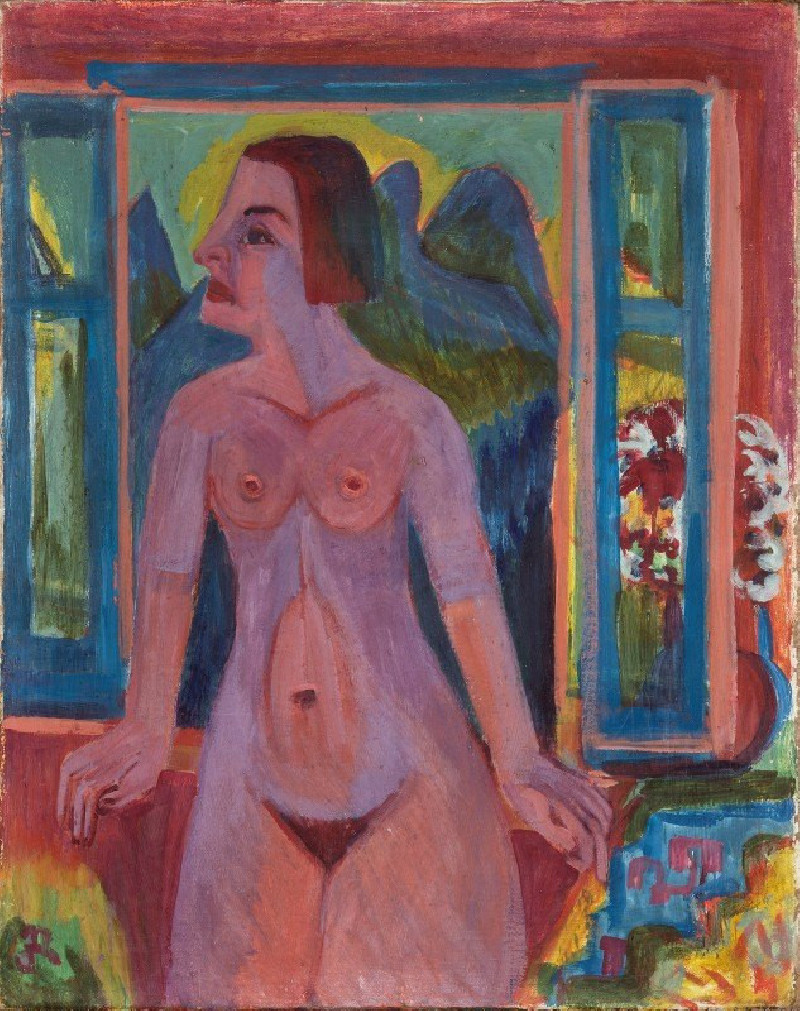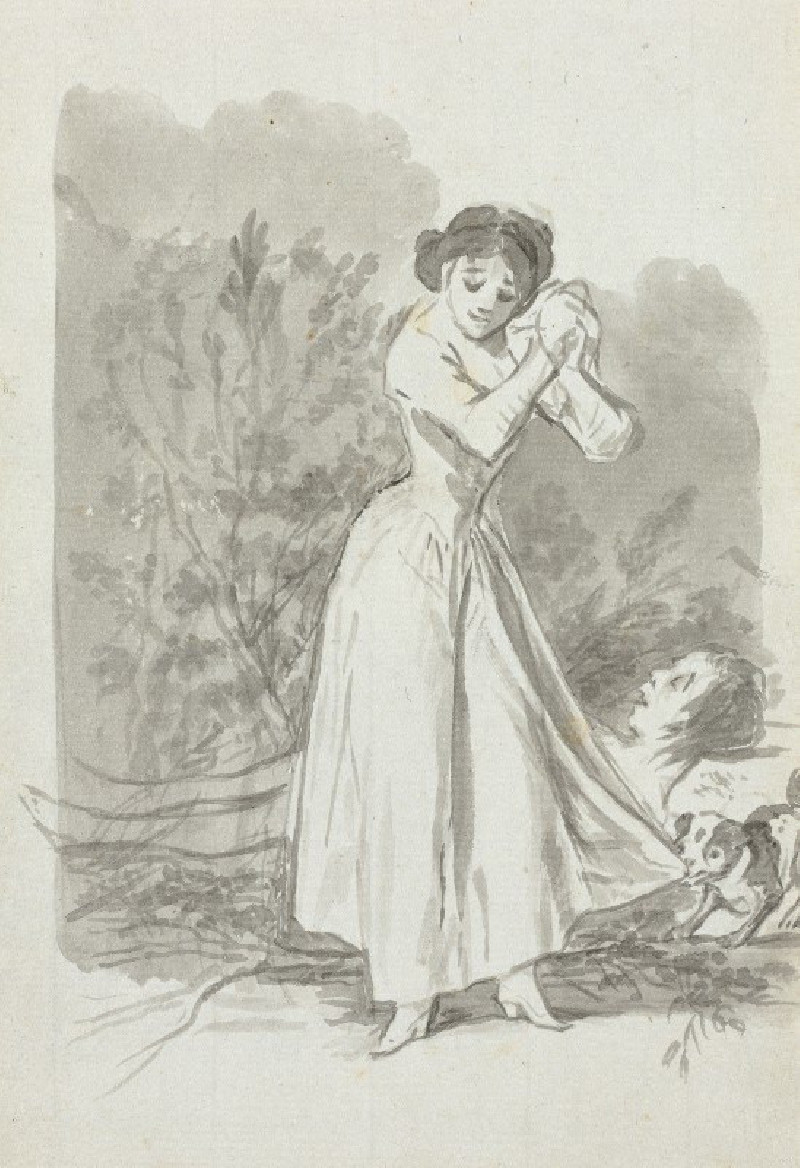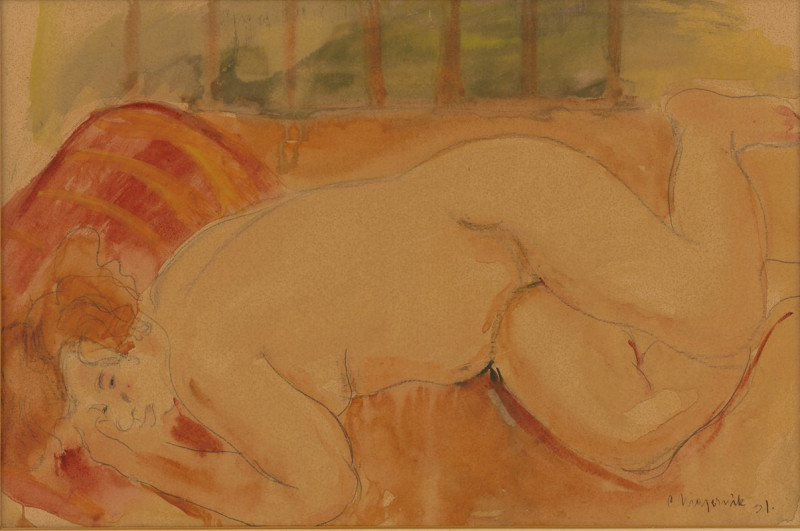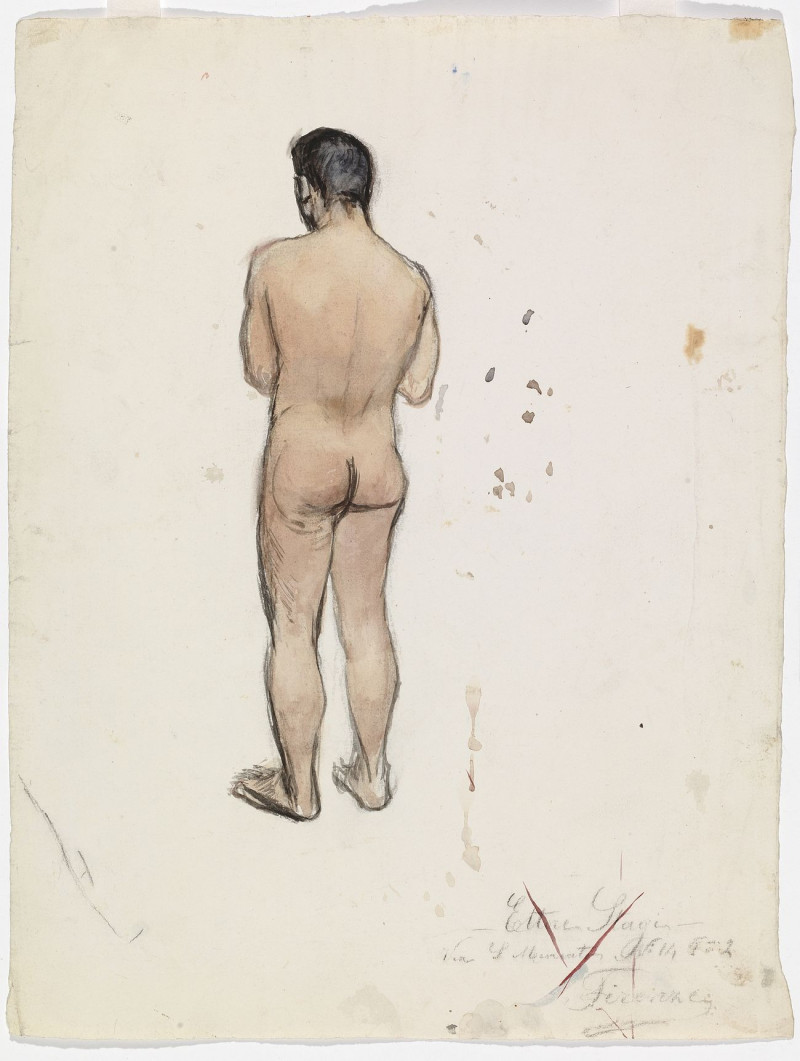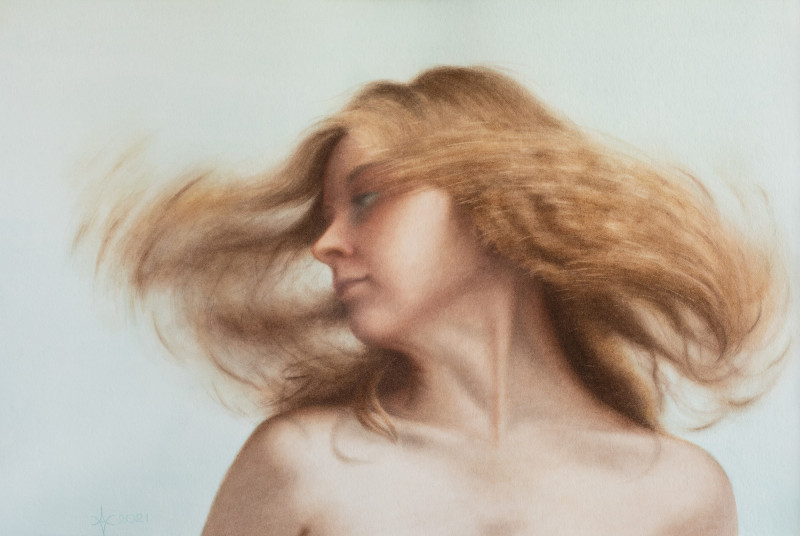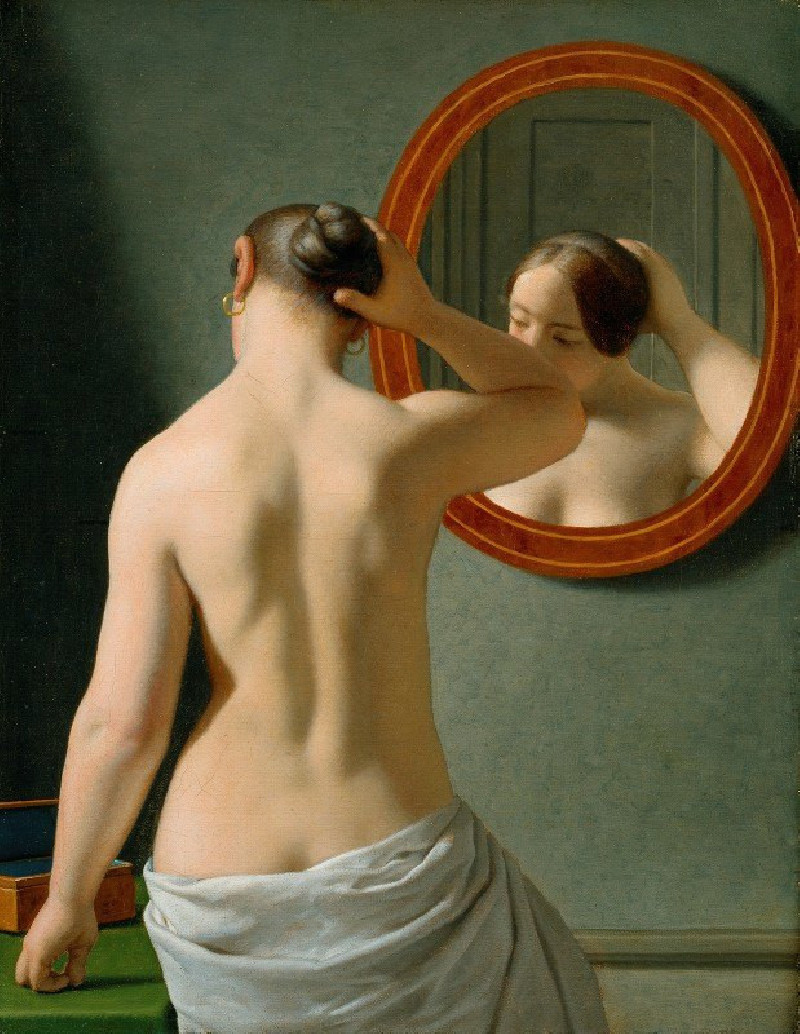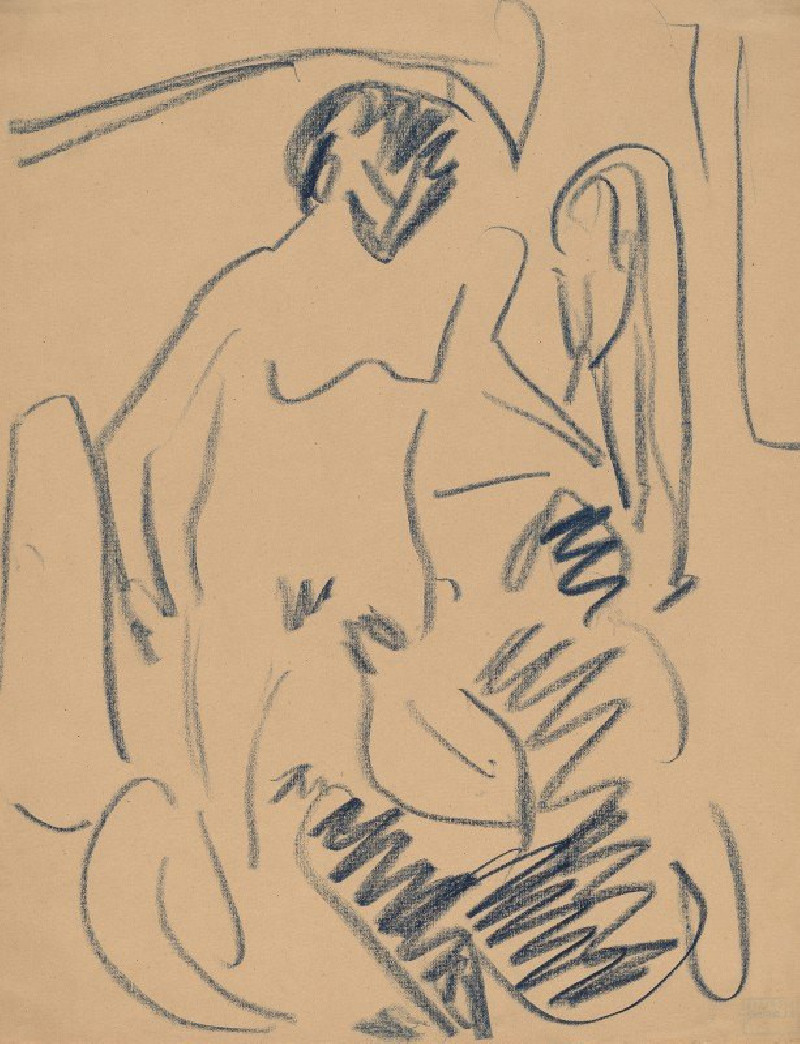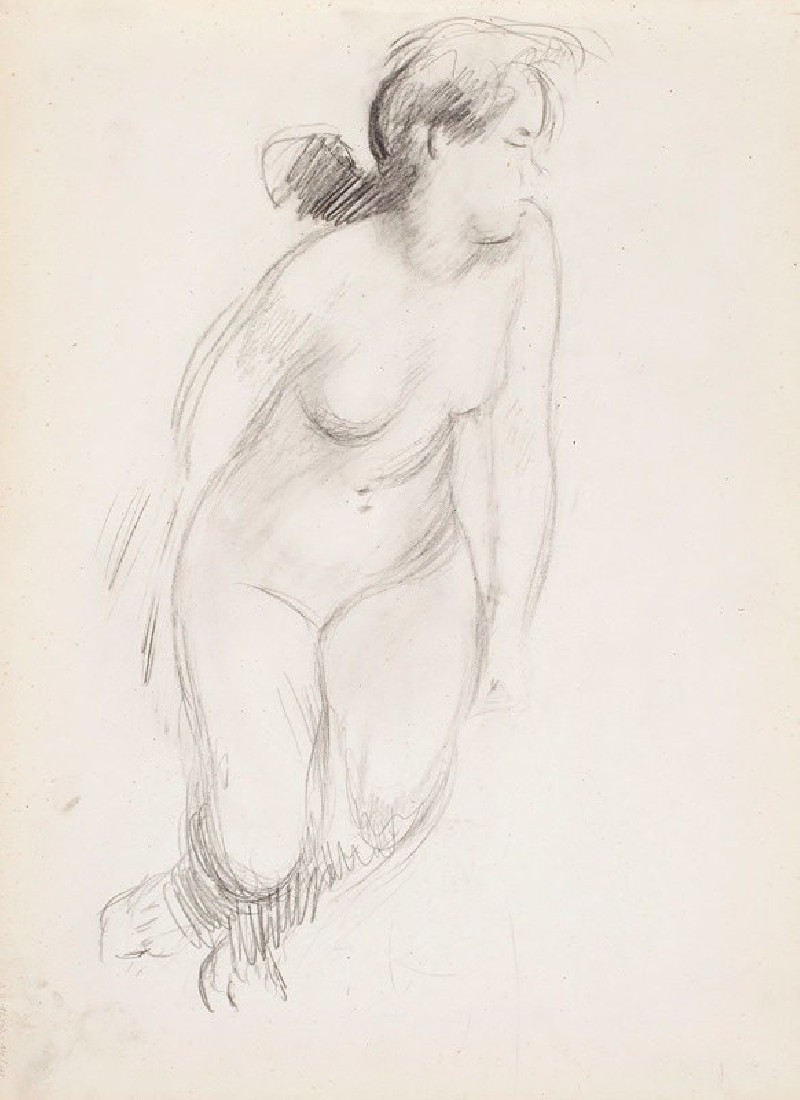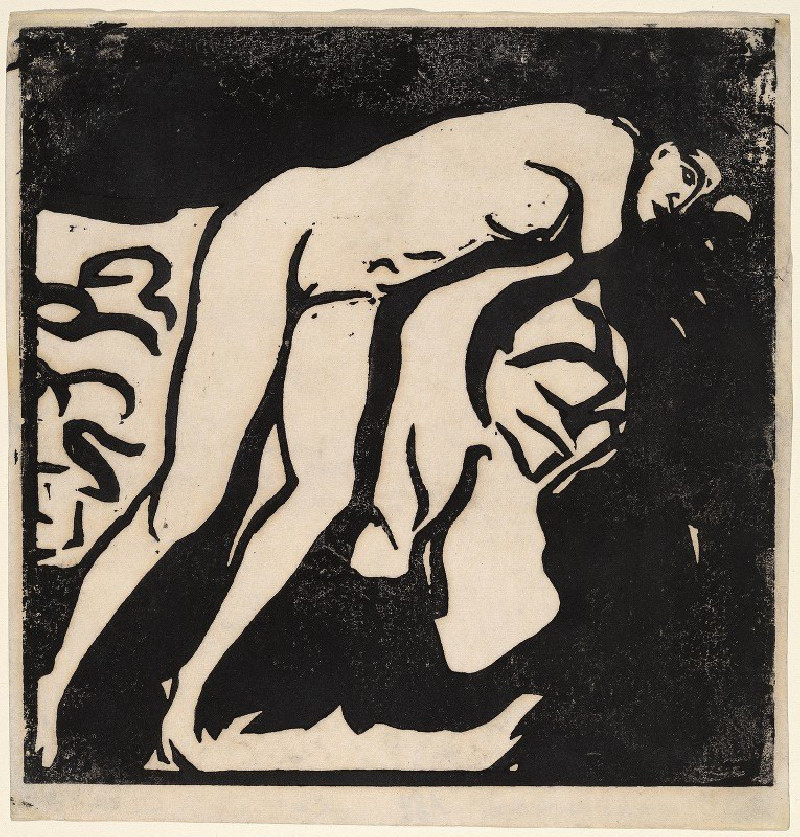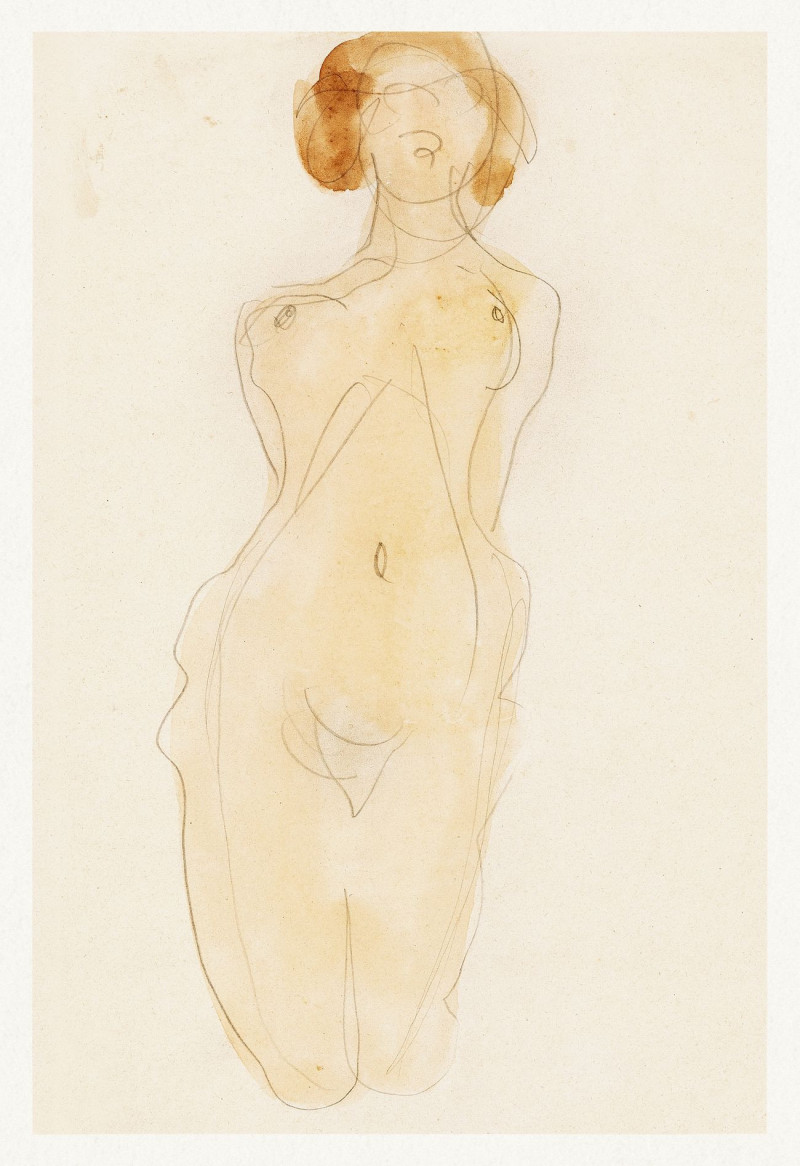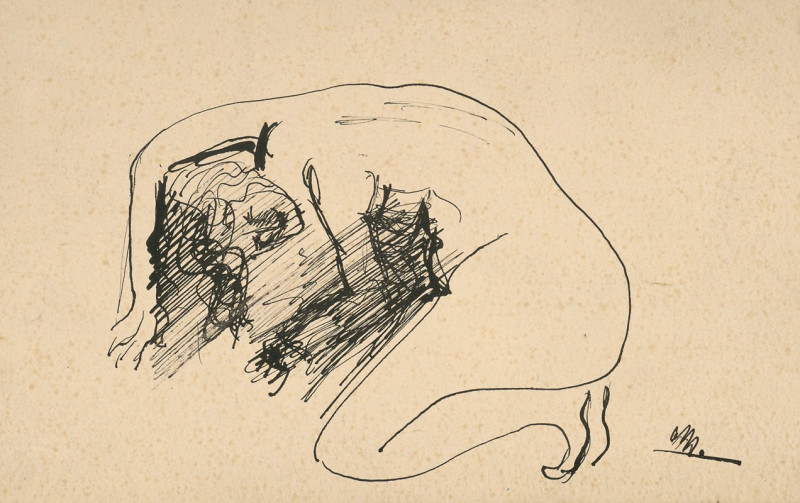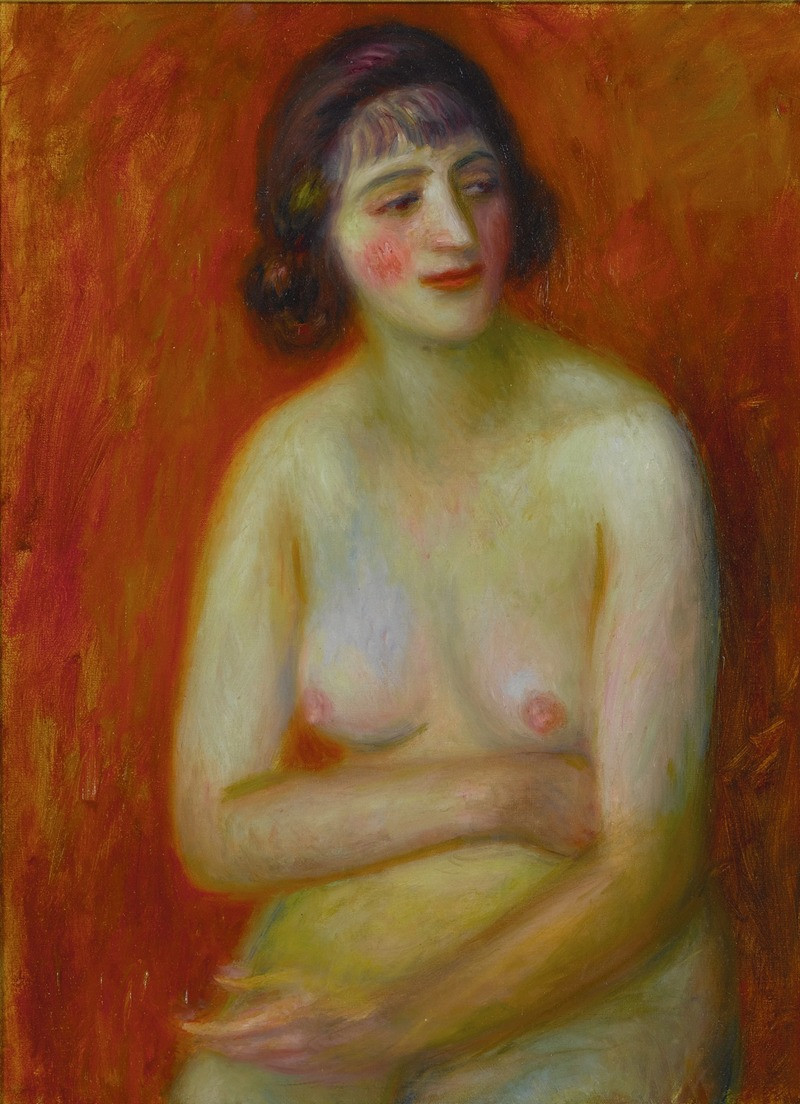Nude Woman at window (1922 – 1923)
Technique: Giclée quality print
Recommended by our customers
More about this artwork
Ernst Ludwig Kirchner's painting "Nude Woman at Window" (1922-1923) is a vibrant and expressive work that exemplifies the artist's bold use of color and profound exploration of human emotion and form. The painting depicts a nude woman standing by a window, her pose both casual and contemplative, as she looks out into the world beyond.The color palette is rich and intense, with deep reds, blues, and greens that create a dynamic contrast against the soft pinks and purples of the woman's skin. These colors do not just define forms but also seem to echo the emotional state of the figure, suggesting an inner life full of complexity.Kirchner's style is evident in the angular lines and slightly distorted perspectives, a hallmark of the German Expressionist movement. The background, with its abstract elements and juxtaposition of interior and exterior views, adds to the sense of psychological depth.This painting invites viewers to ponder the relationship between the subject and her surroundings, as well as her introspective gaze that might suggest longing, contemplation, or quiet resilience.
Delivery
Returns
Ernst Ludwig Kirchner (1880–1938) was one of the most important German Expressionist painters. He was a co-founder of Die Brücke, a group of German expressionist artists formed in Dresden in 1905. Die Brücke and Kirchner took inspiration from Vincent Van Gogh and Edvard Munch, as well as African and Oceanic art. They used woodblock printing as a medium to showcase their signature style: flat, unrealistic images with vivid colors. The recurring themes in Kirchner's artworks included exotic cultures, faraway landscapes, self-portraits, dancers and Berlin street life. His paintings and prints effectively portrayed non-European cultures despite the fact that he never traveled outside of Europe.

